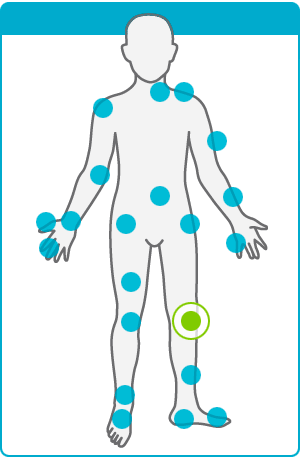[one_half last=”no”]
 |
[/one_half]
The knee joint is the largest joint in the body and contains three compartments: medial (inside of the knee), lateral (outside of the knee) and patellofemoral (front of the knee). The knee bends and rotates and can carry a load of up to three times a person’s body weight when walking. With this amount of activity, it is easy to see why the knee is a joint at risk of injury. Being overweight has implications for the loading of the joint and puts a person of pain, early joint degeneration and swelling. Initiating exercises must be done gradually as the bones and the joint need to adapt to the impact associated with fast walking, running or jumping.
Acute injury to the knee joint can harm the soft tissues such as the cartilage, the ligaments, the meniscus, the bursa, tendons or can even cause fracture of any of the bones- tibia, femur or patella. These often occur during sport and exercise. Overuse injuries or overload injuries are painful conditions of the soft tissues where inflammation is brought on by small strains in the tissues and this can worsen over days to weeks. A number of treatment options are helpful to promote healing including ice initially, strapping, anti-inflammatory medication and frequently physiotherapy.
Chronic pain from degeneration (wear and tear) or arthritis (inflammation of the joint) and more uncommon causes such as an infection, a systemic inflammatory condition or a tumor warrant investigation by your doctor.
Investigations are sometimes helpful in identifying or at least outruling a problem. Xrays are good at identifying a fracture or arthritis, whereas MRI is much better at identifying soft-tissue problems such as ligament, cartilage or meniscal tears.